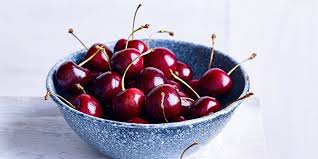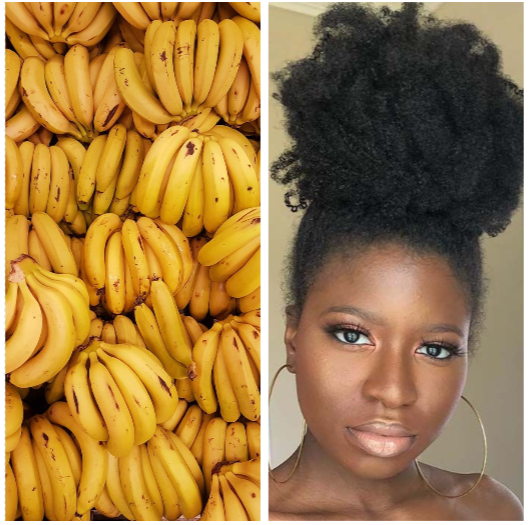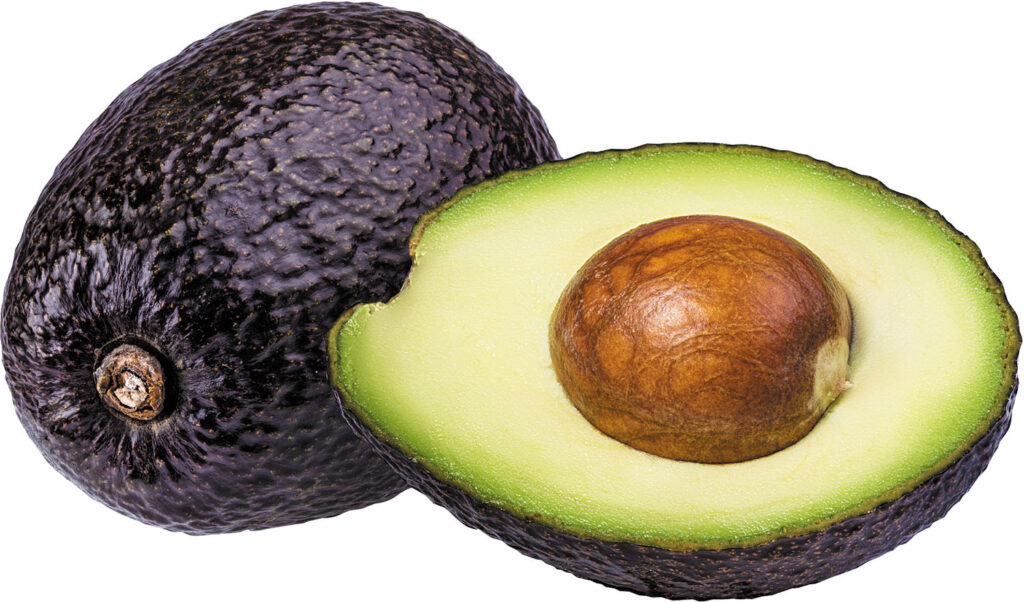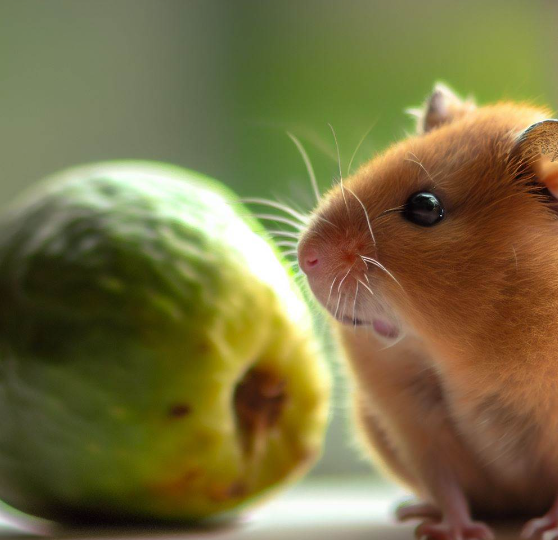Bananas are known for their sweet taste, which is because of sugar, acids, and smell-good stuff in them. When bananas aren’t ripe, they have starch in them, which changes into sugars like glucose, fructose, and sucrose as they get ripe. A banana that’s ripe has up to 22% sugar, which makes it taste sweet and gives it a soft and creamy feel.
Table of Contents
- Bananas’ Nutrients Make Them Naturally Sweet
- How Enzymes Help Release Sugar
- Acids Make Sweetness Perfect
- Smell Also Makes Bananas Taste Better
- Texture Makes Eating Bananas Fun
- Many Things Make Bananas Sweet
- 1. Growing in the Right Place
- 2. Different Banana Types
- 3. Picking Them at the Right Time
- 4. Being Careful Not to Hurt Them
- 5. Ripening Them Just Right
- 6. Letting Them Get Truly Ripe
- Choosing and Enjoying Perfectly Ripe and Sweet Bananas
- 1. Selecting the Ripest Ones
- 2. How to Store Bananas for Some Days
- 3. What to Eat with Bananas to Make Them Yummier
- 4. Ways to Enjoy Bananas
- 5. Savoring Bananas Slowly for the Best Taste
- Why Some Bananas Are Sweeter Than Others
- 1. Banana Sweetness is Affected by Weather
- 2. Picking Bananas Early
- 3. Sweetness is Lowered by Cold
- 4. Keeping Bananas for Too Long After They’re Ripe
- 5. Judging Bananas By Their Looks
- Why Sweetness is So Important in Bananas
- 1. Everyone Likes Sweetness
- 2. Kids Love Sweet Taste
- 3. Bananas Are Great in Cooking and Baking
- 4. Bananas Give Quick Nutrition and Energy
- 5. Sweetness Makes Us Feel Good
- In Conclusion About Banana Sweetness
Bananas’ Nutrients Make Them Naturally Sweet
Bananas have vitamins and minerals that help them taste sweet. They have B vitamins like thiamine, riboflavin and vitamin B6, which help our bodies turn carbs into sugar. They also have vitamin C, which makes sweetness taste stronger. Minerals like phosphorus and magnesium help our bodies get energy from sugar. All of these nutrients together mean bananas use their sugar very well to taste sweet.
How Enzymes Help Release Sugar
When bananas get ripe, enzymes like amylase change starch into a sugar called maltose.
Then, other enzymes break maltose down into glucose, a simple sugar. Glucose and another sugar called fructose touch the taste buds on our tongue and tell our brain that it’s sweet. As these enzymes keep working, they make more glucose and fructose, so the banana gets sweeter.
Acids Make Sweetness Perfect
Bananas have acids like malic, citric and oxalic acids, but not too much. These acids make the sweetness taste better and help make sure it’s not too sweet. They add just the right sour touch to make bananas taste even better.
Smell Also Makes Bananas Taste Better
Bananas have special smell parts like esters and terpenes that give them their banana smell. When we eat them, these smells mix with the sweetness and make the flavor really good. When bananas are very ripe, this smell-sweetness link is really strong.
Texture Makes Eating Bananas Fun
Ripe bananas are soft and creamy, which adds to how enjoyable they are to eat. When we chew them, their texture helps release their sugar and smells better, and this all makes eating bananas great. They also have some tannins that give a little dry feeling and clean your mouth so you can taste the sweetness even more.
Many Things Make Bananas Sweet
From when they are still growing until they are ripe, lots of things help bananas become really sweet.
These are some reasons bananas turn sweet:
1. Growing in the Right Place
Bananas like warm places with the sun kinda shining through and enough water. They make lots of sugar when they grow in places like this. Plus, if they grow in dirt that has all the right food for plants, they can make lots of sugar.
2. Different Banana Types
There are different banana types, like the Cavendish and Manzano, which are really sugary. Farmers choose these kinds on purpose because people like sweet stuff. They are good at changing starch into sugar and have lots of glucose, fructose, and sucrose.
3. Picking Them at the Right Time
When bananas are picked at the best time, they’ve had more time to make their sugars. As they get ripe, they break down their starches into simple sugars, which makes them taste sweet. If they are picked when they are just right, they will taste really good.
4. Being Careful Not to Hurt Them
If bananas get bumped and bruised, it can mess up how they get ripe and make them less sweet. Being careful not to hurt them means they can get perfectly ripe and as sweet as possible.
5. Ripening Them Just Right
After being picked, bananas are kept at a cool temperature and given a gas called ethylene to make them ripen smoothly. The right temperature and humidity help the bananas turn their starches into sugar properly.
6. Letting Them Get Truly Ripe
If bananas have enough time to ripen, they’ll get sweet as can be. When they have a nice yellow color with brown speckles and feel soft, that means the sugars are at their best. The ripe fruit keeps making sugar until it’s perfectly sweet.
Choosing and Enjoying Perfectly Ripe and Sweet Bananas
Picking the right time to eat bananas can make them taste even better.
Here are tips for picking and eating bananas at their sweetest:
1. Selecting the Ripest Ones
Look for bananas that are full, yellow and have some brown spots; this is a sign they are ripe and sweet. The banana should feel a bit soft when you gently push on it. Try not to pick ones that are green or too hard because they aren’t ready yet and won’t taste as sweet.
If bananas are too ripe and have lots of dark spots, they might not be sweet. They can get a fermented, less pleasant taste instead.
2. How to Store Bananas for Some Days
If your bananas are just right to eat, you can keep them out in the room for about 2 to 4 days. They might look darker on the outside, but they will still taste sweet. If you don’t want them to ripen too quickly, put them in the fridge. Remember to let them warm up before you eat them so they taste better.
3. What to Eat with Bananas to Make Them Yummier
Try eating your ripe bananas with something that has a bit of a bite or tang, like yogurt, oranges, or strawberries. This makes the bananas seem even sweeter. Spices like cinnamon or vanilla also make the sweet flavor stronger. When you bake, using ripe bananas can add a natural sweet taste and helps to bind ingredients and add moisture too.
4. Ways to Enjoy Bananas
Eat banana slices on their own or mix them into fruit salads, smoothies, or milkshakes. Adding banana pieces to oatmeal, pancakes or snack mixes also adds a sweet touch. If you mash up ripe bananas, you can use them instead of sugar in recipes for cakes, muffins, or ice cream. This brings out their sweetness in a delicious way.
5. Savoring Bananas Slowly for the Best Taste
When you eat a banana, take small bites and chew well. Notice the smell, feel, and taste of the banana. Enjoying it this way lets you really taste the sweetness that comes from the fruit’s natural sugars and enzymes.
Why Some Bananas Are Sweeter Than Others
Bananas can taste different in how sweet they are. Here are some reasons for this:
1. Banana Sweetness is Affected by Weather
If bananas don’t get enough sunshine while they’re growing, they won’t make as much sugar. Also, if it’s too cool, the chemistry that helps bananas ripen and turn starch into sugar doesn’t work as well. These things can make bananas less sweet.
2. Picking Bananas Early
Bananas that are picked before they are fully ripe don’t have as much time to change their starch into sugar. They might look ready to eat, but they won’t be as sweet as they could be.
3. Sweetness is Lowered by Cold
Bananas are sensitive to the cold. If they get too cold, they can’t ripen properly or turn starch into sugar. This can happen at any point, so bananas that have gotten too cold usually aren’t as sweet.
4. Keeping Bananas for Too Long After They’re Ripe
If bananas stay ripe for too long, they start losing some of their sweetness. They can also start to get a sour and fermented taste which isn’t as nice.
5. Judging Bananas By Their Looks
Sometimes bananas don’t look perfect, and we might think they won’t taste sweet. But the brown spots don’t always mean they’re less sweet. It’s best to taste them to know for sure.
Why Sweetness is So Important in Bananas
Sweetness is one of the main reasons why bananas are so loved all over the world. Here are some key ways that sweetness is important:
1. Everyone Likes Sweetness
People usually enjoy the taste of sugar, so the sweet taste of bananas is liked by many different people in different places.
2. Kids Love Sweet Taste
Kids are naturally drawn to sweet things and ripe bananas are perfect because they’re not too sweet. This makes bananas a common first fruit for babies and helps them start to like fruits.
3. Bananas Are Great in Cooking and Baking
The pleasant sweetness of bananas fits well with savory dishes because it adds a nice flavor without covering up other tastes. In baking, bananas help bind everything together and add natural sweetness, which is perfect for making things like bread and ice cream.
4. Bananas Give Quick Nutrition and Energy
The sugars in bananas give us energy that our body can use right away. That’s why athletes like to eat bananas before exercising, for the boost of energy and good nutrition.
5. Sweetness Makes Us Feel Good
When we eat ripe bananas, the bit of sugar they have can make us feel a little happier. Plus, sweets can make us feel cheerful and comforted.
In Conclusion About Banana Sweetness
The special sweet taste we get from ripe bananas is because of their natural sugars and flavors, which are balanced just right with acidity and enzymes. Years and years of growing them in tropical places have made bananas into the tasty fruit we eat today.
Farmers work hard and handle bananas carefully to make sure they stay sweet from when they are grown to when they get to us. Enjoying the sweet taste of ripe bananas is what makes them so popular and loved everywhere.






![What Fruits Can Birds Eat? [15 Nutritious Fruits]](https://fruitonix.com/wp-content/uploads/2023/05/Screenshot-2023-05-11-4.13.04-AM.png)


